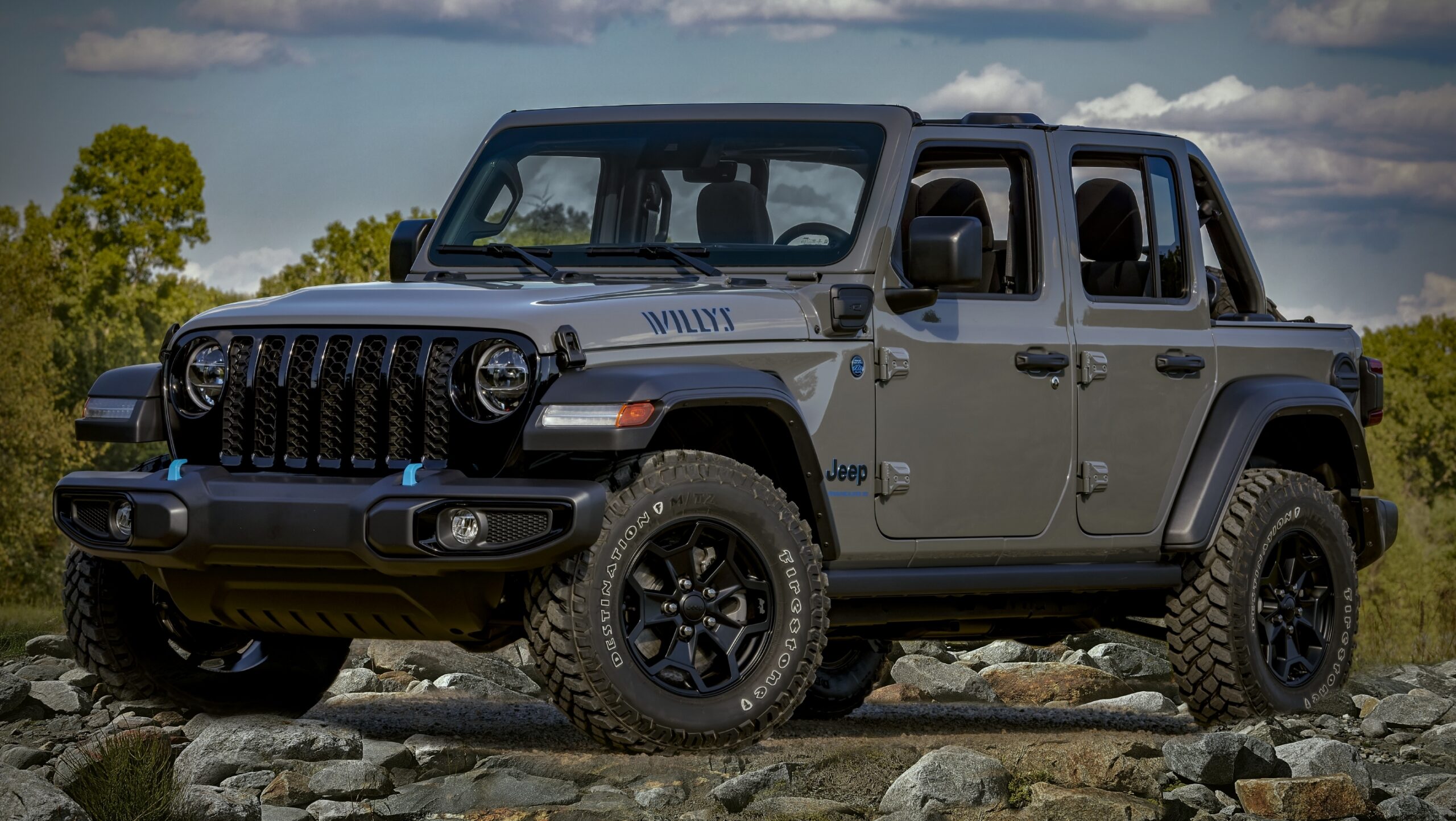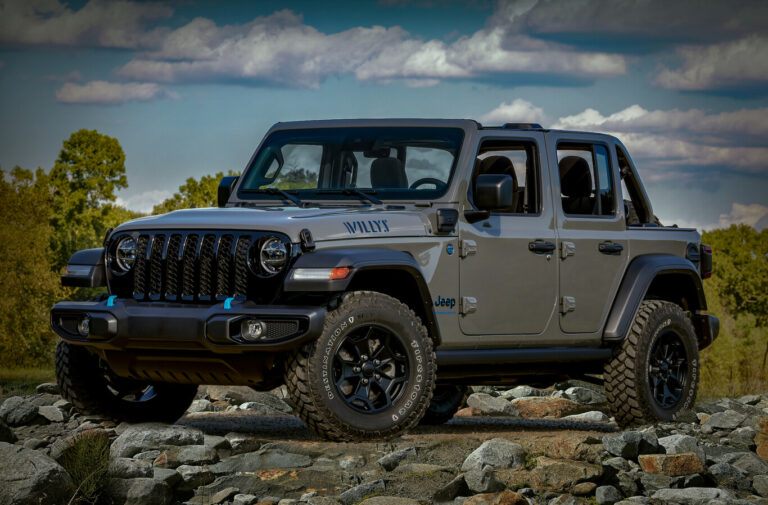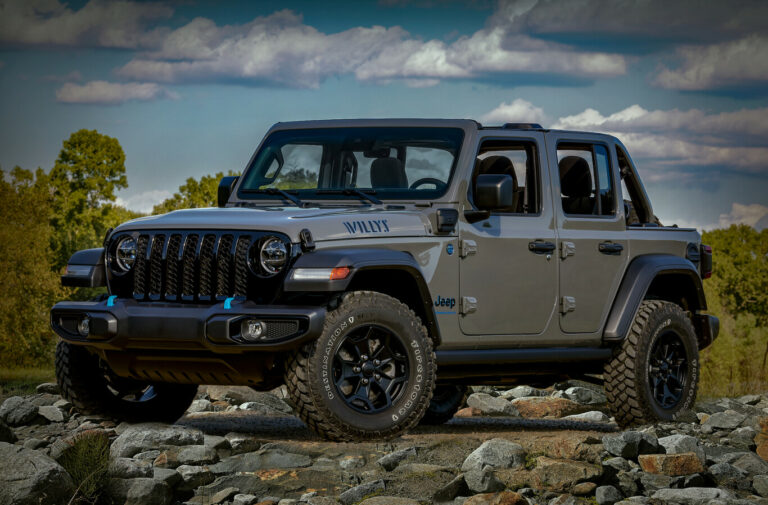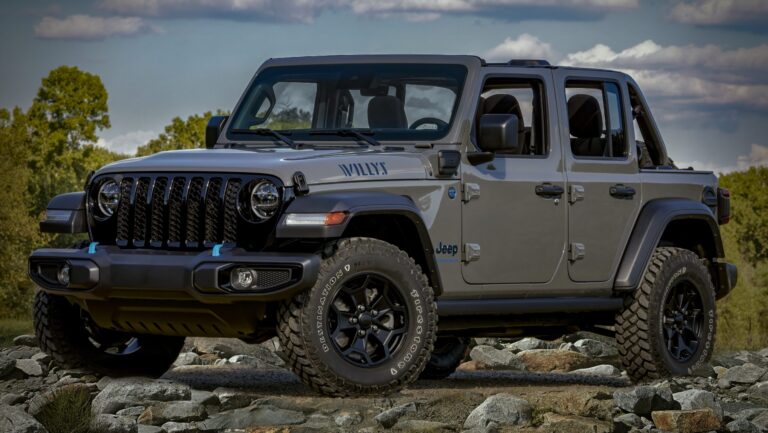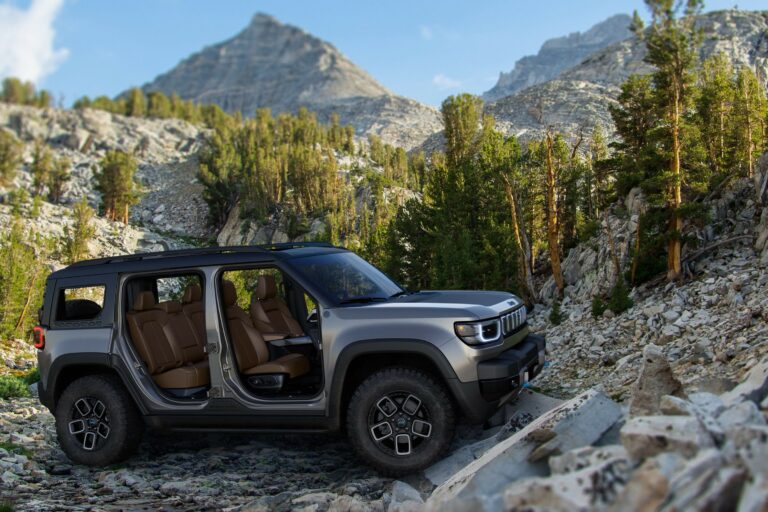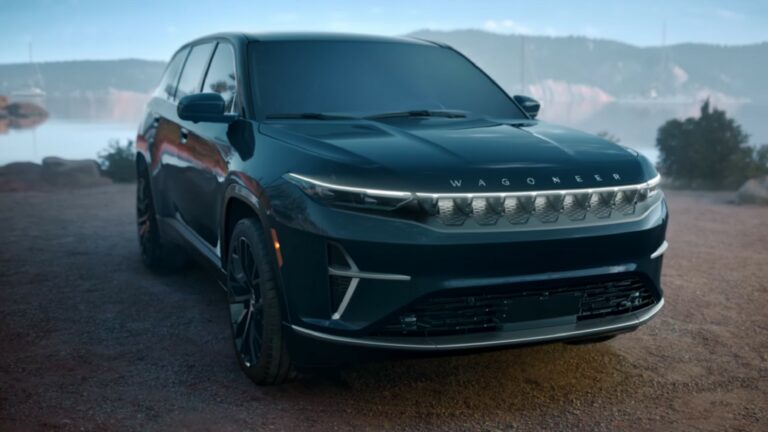Jeep Wrangler 2 Door Luggage Space: Maximizing Your Adventure Capacity
Jeep Wrangler 2 Door Luggage Space: Maximizing Your Adventure Capacity jeeps.truckstrend.com
The Jeep Wrangler 2 Door is an icon of off-road prowess, an embodiment of freedom, and a direct descendant of the legendary military vehicle that conquered terrains worldwide. Its short wheelbase, nimble handling, and removable roof and doors make it the ultimate choice for enthusiasts seeking raw, unadulterated adventure. However, for all its rugged charm and trail-conquering ability, one aspect often prompts a second thought: its luggage space. Understanding and effectively utilizing the limited cargo capacity of the 2-door Wrangler is crucial for anyone planning a road trip, an overlanding expedition, or even just a weekend getaway. This comprehensive guide will delve into every facet of the Jeep Wrangler 2 Door’s luggage space, offering practical insights and solutions to ensure your gear never holds back your adventure.
Understanding the Basics: Dimensions and Inherent Limitations
Jeep Wrangler 2 Door Luggage Space: Maximizing Your Adventure Capacity
At its core, the 2-door Jeep Wrangler is designed for agility and maneuverability, not expansive cargo hauling. This is immediately evident when looking at its official specifications.
- With the rear seats up: The 2-door Wrangler typically offers a modest 12.9 to 13.0 cubic feet of cargo space behind the rear seats. To put this in perspective, this is roughly equivalent to the trunk of a small sedan or just enough for a couple of standard carry-on suitcases and a backpack or two. This space is also quite tall but narrow, making it challenging for wide or bulky items.
- With the rear seats folded/tumbled: When you fold or tumble the rear seats forward, the usable cargo volume expands significantly to approximately 31.7 cubic feet. This transformation turns the rear of your Wrangler into a much more versatile loading zone, capable of accommodating larger items like camping gear, a cooler, or even a mountain bike (with the front wheel removed, depending on the bike’s size).
The primary limitation is the vehicle’s short wheelbase and the necessity of accommodating two rows of seating. Unlike its 4-door sibling (which offers considerably more space, especially with the rear seats up), the 2-door Wrangler demands a more strategic approach to packing. The spare tire mounted on the tailgate also slightly impacts the effective depth of the cargo area, especially for items that might protrude outwards.
The Rear Seat Conundrum: Fold, Tumble, or Remove?
The decision of what to do with your rear seats is the first and most impactful step in maximizing your 2-door Wrangler’s cargo capacity.

Folding the Seats
Most modern 2-door Wranglers allow the rear seatbacks to fold flat. This is the quickest and easiest way to increase cargo volume.
- How-to: Simply pull a latch (usually on the top of the seatback) and push the seatback down.
- Benefits: Quick, easy, no tools required. Provides a relatively flat loading floor.
- Limitations: The folded seat still takes up vertical space, creating an uneven floor with the front seats. It doesn’t offer the maximum possible volume.

Tumbling the Seats
Some Wrangler models allow the rear seats to not only fold flat but also tumble forward against the front seats.
- How-to: After folding the seatback, there’s usually another latch or strap that allows the entire seat assembly to pivot and fold upright against the front seats.
- Benefits: Creates a much larger, more open cargo area, freeing up more vertical space than just folding.
- Limitations: The tumbled seat still occupies space in the passenger compartment, potentially limiting how far forward the front seats can slide.

Removing the Seats
For the absolute maximum cargo volume, removing the rear seats entirely is the way to go. This is a common practice for serious overlanders or those who frequently haul large items.
- How-to: This usually involves unbolting the seat from the floor. For JK and JL models, it’s typically four bolts, often requiring a Torx bit. It’s recommended to consult your owner’s manual for specific instructions.
- Benefits: Unlocks the full ~31.7 cubic feet of space, creating a completely flat and unobstructed cargo floor. Reduces vehicle weight slightly.
- Limitations: Requires tools, takes more time, and you’ll need a place to store the seats when they’re out. It also means you can’t carry rear passengers. The seats themselves can be heavy and awkward to remove and reinstall.
Practical Advice: For day trips or light loads, folding the seats is sufficient. For weekend trips with one or two people, tumbling is a good compromise. For serious adventures or hauling bulky gear, removing the seats is often the best solution.
Strategies for Maximizing Internal Space
Once you’ve decided on the rear seat configuration, intelligent packing and organization become paramount.
- Embrace Verticality: The Wrangler’s cargo area is often taller than it is deep or wide. Stack items carefully, using soft bags that conform to irregular shapes. Cargo nets or bars can help prevent items from toppling over.
- Soft Bags Over Hard Cases: Duffle bags, compressible camping gear, and soft-sided coolers are your best friends. They can be squeezed into tight spaces and molded around other items far better than rigid suitcases or hard coolers.
- Utilize Every Nook and Cranny:
- Under-seat storage: Small compartments might be available under the front seats for recovery straps, first-aid kits, or small tools.
- Passenger Footwell: If you’re traveling solo or with one passenger, the front passenger footwell can hold a surprising amount of soft gear.
- Center Console & Glove Box: Essential for small valuables and documents.
- Jeep-Specific Organizers: The aftermarket offers a plethora of solutions:
- Tailgate Storage Bags: Pouches that attach to the inside of the tailgate for small items.
- MOLLE Panels: These modular panels can be mounted on the rear gate, seatbacks, or even the roll bar, allowing you to attach various pouches and accessories.
- Rear Cargo Area Organizers: Custom-fit bins or drawer systems (often requiring seat removal) that create compartments for gear.
- Security Solutions: For valuables, especially in an open-top or soft-top Wrangler, security is a concern.
- Locking Consoles/Glove Boxes: Standard features, but ensure they are robust.
- Tuffy Security Products: These offer heavy-duty, lockable steel boxes that fit into the cargo area (often replacing the rear seats or fitting behind them) or under the front seats, providing excellent protection against theft and the elements.
External Cargo Solutions: Expanding Beyond the Cabin
When internal space simply isn’t enough, external solutions become essential. These extend your Wrangler’s carrying capacity without sacrificing interior comfort.
- Roof Racks:
- Types: Gutter-mounted racks (for hardtops), frame-mounted racks that attach to the body, or specific hardtop racks.
- Benefits: Ideal for bulky, awkward items like kayaks, paddleboards, bicycles, spare tires, or large cargo baskets/boxes. Keeps dirty gear outside.
- Considerations: Increases vehicle height (watch out for garages/low overhangs), can create wind noise and impact fuel economy, and has weight limits (dynamic vs. static). Loading heavy items requires effort.
- Hitch-Mounted Carriers:
- Types: Cargo baskets, enclosed cargo boxes, bike racks, and even small utility trailers.
- Benefits: Easy to load and unload, often more fuel-efficient than roof racks (less wind resistance), and keeps items low to the ground. Doesn’t affect vehicle height.
- Considerations: Increases overall vehicle length (affecting maneuverability and parking), can obstruct the rear door/tailgate opening, and may impact departure angle when off-roading.
- Spare Tire Mounted Carriers:
- Types: Bags designed to strap around the spare tire (for trash, recovery gear, muddy clothes), or even small cargo boxes.
- Benefits: Utilizes otherwise unused space, keeps dirty items outside, and is easily accessible.
- Considerations: Limited capacity, exposed to the elements, and can obstruct rear visibility if too large.
- Fender-Mounted Storage:
- Some aftermarket solutions offer small storage boxes or bags that mount onto the vehicle’s fenders or side panels. These are typically for very small items like emergency tools or extra water bottles.
Packing Smart: Tips for Every Adventure
Beyond the hardware, smart packing techniques can make a significant difference.
- Lay it All Out: Before packing anything, lay out all the gear you intend to bring. This helps you visualize the volume and identify anything you can do without.
- Pack Essentials Last: Items you’ll need quick access to (e.g., first-aid kit, recovery gear, rain jacket, snacks) should be packed on top or in easily reachable side pockets.
- The Power of Soft Bags: As mentioned, flexible bags allow you to fill every available void.
- Modular Packing: Use smaller bags or packing cubes within larger bags to keep items organized and prevent them from shifting.
- Distribute Weight Evenly: When using external carriers, try to balance the weight for better handling and stability, especially when off-roading.
- Secure Everything: Loose items can become projectiles in an accident or during spirited off-road driving. Use straps, cargo nets, and tie-downs to secure all gear, both inside and out.
Challenges and Considerations
- Security: The open-air nature of the Wrangler, especially with a soft top, means valuables are vulnerable. Always use lockable solutions for sensitive items.
- Weather Protection: Soft tops offer less insulation and protection from dust and heavy rain compared to hardtops. Ensure your gear is in waterproof bags or containers.
- Visibility: Piling cargo too high in the rear can obstruct your rear view. Consider a rear-view mirror camera system if this is a frequent issue.
- Accessibility: Items packed deep within the cargo area can be difficult to access without unpacking everything. Plan your packing order.
- Weight Limits: Always be mindful of your Wrangler’s Gross Vehicle Weight Rating (GVWR) and the weight limits of any external racks or carriers. Overloading can be dangerous and damage your vehicle.
Table of Jeep Wrangler 2 Door Luggage Space Solutions and Estimated Costs
This table provides a general overview of common accessories designed to enhance or secure the luggage space in a 2-door Jeep Wrangler, along with estimated price ranges. Prices can vary significantly based on brand, quality, and specific model fitment.
| Category of Solution | Specific Item Examples | Estimated Price Range (USD) | Primary Benefit | Key Considerations |
|---|---|---|---|---|
| Internal Organization | Cargo Nets (floor, ceiling) | $20 – $80 | Secures loose items, prevents shifting | Best for lighter items, basic organization |
| Seat-back Organizers, Door Pockets | $30 – $100 | Adds accessible storage for small items | Limited capacity, may obstruct rear passenger legroom if too bulky | |
| Under-seat Storage Bins/Trays | $40 – $150 | Utilizes often-unused space for small valuables/tools | Small capacity, specific fit required for some models | |
| Center Console/Glove Box Organizers | $20 – $70 | Keeps small essentials tidy and accessible | Very limited space, primarily for personal items | |
| Internal Security | Rear Cargo Area Security Enclosures (Tuffy, etc.) | $300 – $800+ | Highly secure, lockable storage for valuables | Reduces overall usable space, can be heavy, typically requires rear seat removal |
| Lockable Storage Drawers (rear cargo) | $500 – $1500+ | Organized, secure, and accessible storage | Significant investment, often requires permanent installation, reduces vertical space | |
| External Expansion | Roof Rack Systems (Hardtop specific, gutter mount) | $250 – $1200+ | Adds significant capacity for large, bulky items (kayaks, tents) | Increases vehicle height, wind noise, fuel economy impact, weight limits |
| Hitch-Mounted Cargo Baskets | $150 – $400 | Easy to load, versatile for coolers, gear bags | Increases vehicle length, can obstruct tailgate, affects departure angle | |
| Hitch-Mounted Cargo Boxes (enclosed) | $300 – $700 | Provides weather-protected, secure external storage | Larger and heavier than baskets, similar limitations to baskets | |
| Spare Tire Mounted Cargo Bags | $80 – $250 | Ideal for recovery gear, trash, or muddy clothes | Limited capacity, exposed to elements, can obstruct rear view | |
| Fender-Mounted Storage Bags/Packs | $60 – $180 | Convenient for small, frequently accessed items on the trail | Very limited capacity, exposed to elements | |
| Specialized Gear | MOLLE Panel Systems (tailgate, roll bar, seat-back) | $50 – $300 | Modular attachment points for various pouches and accessories | Best for smaller, organized items, requires MOLLE-compatible gear |
| Soft-Sided Duffle Bags/Camping Storage | $30 – $200+ | Flexible, conforms to irregular spaces, easy to store when empty | Less protective than hard cases, may not be fully waterproof |
Frequently Asked Questions (FAQ)
Q1: How much luggage space does a 2-door Jeep Wrangler have?
A1: With the rear seats up, it has about 12.9-13.0 cubic feet. With the rear seats folded or removed, it expands to approximately 31.7 cubic feet.
Q2: Can I fit a full-size cooler in a 2-door Wrangler?
A2: Behind the rear seats, it’s highly unlikely. With the rear seats folded or removed, a full-size cooler can fit, though it might take up a significant portion of the available space. Soft-sided or smaller coolers are generally more practical.
Q3: Is it easy to remove the rear seats from a 2-door Wrangler?
A3: Yes, for most JK and JL models, it’s a straightforward process involving unbolting a few bolts (often Torx). It takes about 5-10 minutes but does require a suitable wrench or socket set. The seats can be heavy and awkward to handle alone.
Q4: Are roof racks safe for a Wrangler, especially with a soft top?
A4: Yes, reputable aftermarket roof rack systems are designed to be safe and secure for Wranglers. However, specific racks are designed for hardtops, and others for soft tops or the vehicle’s frame. Always choose a rack compatible with your Wrangler’s configuration and adhere to its weight limits. Soft tops usually require a frame-mounted rack that doesn’t rely on the soft top itself for support.
Q5: How can I secure my belongings in an open-top or soft-top Wrangler?
A5: The best way is to use lockable security enclosures, such as those made by Tuffy or similar brands, which provide steel, lockable storage bins in the cargo area or under seats. Alternatively, keep valuables out of sight, use a car alarm, and never leave anything valuable unattended.
Q6: What’s the best way to pack for a long trip in a 2-door Wrangler?
A6: Remove the rear seats for maximum space. Use soft-sided luggage and duffel bags that can be easily shaped and compressed. Pack essentials on top or in easily accessible external carriers. Utilize vertical space with nets and stack items carefully. Consider a hitch-mounted carrier or roof rack for larger items.
Q7: Does a soft top affect cargo space in a 2-door Wrangler?
A7: The soft top itself doesn’t directly reduce the internal cubic foot measurements. However, it offers less security and weather protection for your gear compared to a hardtop. Also, soft tops often require different types of roof rack systems than hardtops.
Conclusion
The 2-door Jeep Wrangler, while undeniably iconic and capable, presents a unique challenge when it comes to luggage space. Its compact dimensions are a trade-off for its legendary off-road agility. However, as this guide demonstrates, with thoughtful planning, strategic packing, and the right aftermarket accessories, the perceived limitations of its cargo capacity can be largely overcome.
Whether you’re folding seats for a quick grocery run, removing them entirely for a serious overlanding adventure, or adding external carriers for bulky gear, the key lies in understanding your needs and leveraging the myriad of solutions available. Embracing the constraints and finding creative ways to pack is part of the unique Wrangler ownership experience. So, go forth, pack smart, and let your 2-door Wrangler continue to be the gateway to your next great adventure, unburdened by cargo woes.

